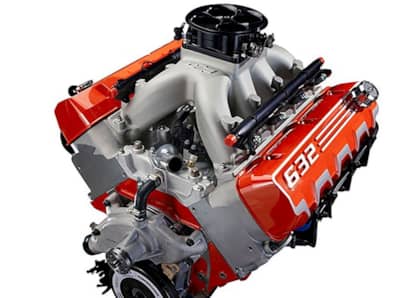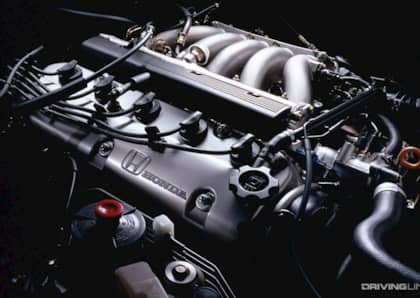Is There Anything Worse Than A Plastic Engine Cover?
While classic car shows often feature row after row of muscle machines sitting with their hoods thrown skyward, that's a lot less likely to be the case 30 or 40 years from now when the current crop of performance cars become collectible.

The culprit? Engine covers. While the dream rides of old proudly displayed their cubic inches with engine blocks painted bright orange and blue and valve covers polished to a fine shine, modern vehicles do their absolute best to hide anything that might look remotely mechanical under a smooth sheen of plastic. The end result is the almost complete detachment between any owner and their automobile's motor, unless they're willing to invest some elbow grease in removing and reinstalling this stylized mask each and every time they want to show off the power plant.
Why do car companies insist on obscuring their engineering prowess with a piece of cheap plastic? We dove into the world of engine covers to try to get to the bottom of what's good, and what's frustrating, about this recent design development.
They're In The Way
Throwing everything else aside, there's a practical problem with engine covers that remains true regardless of how you feel about them: they create a physical barrier between owners, mechanics, technicians and the beating heart of the vehicle itself.

If you want to do almost ANY work on a modern motor, you'll have to add in the extra steps required to remove and re-install a cover as part of the process. This doesn't take into account that the same is likely true if you're trying to diagnose a problem in the engine bay, as a cover easily masks fluid leaks, softens knocks and rattles and skins knuckles as one tries to slip tools past its sharper edges.
This Is Most Likely By Design
Lest you think the above is an accident, consider the fact that most car companies have a vested interest in keeping DIY mechanics from attempting their own maintenance and repairs. Conspiracy theorists will point to OEM service bays as major profit centers for dealerships, and while this is certainly true it's not the only reason automakers are wary of amateurs fiddling around with their drivetrains.

Modern motors are so complicated that they often require special tooling and computer-assisted diagnostic devices and programmers in order to assess and repair. The potential for a bungled spark plug change leading to an expensive warranty issue is something both the bean counters and legal eagles at corporate are all too aware of.
There Are A Few Engineering Arguments…
The move to direct injection fuel systems has brought with it a definite volume increase in the tick-tick-tick sound of a motor as the system fires gasoline into the cylinders at extremely high pressures compared to traditional designs.

As a result, plastic engine covers are occasionally introduced to work together with underhood foam insulation to help deaden this noise and keep it from intruding into the cabin.
…But They Go Both Ways
Early engine covers were notorious for trapping heat against the engine, which in some climates (or during high performance driving) can reduce output and put extra strain on your vehicle's systems.

Modern covers are a bit better at managing heat—and in some cases, are designed to help channel outside air into the vehicle's intake—but at the same time they are so much larger and comprehensive that their removal still leads to cooler overall underhood temperatures.
Most Of Them Just Look Awful
It's really hard to argue that plastic engine covers add anything of esthetic value to a vehicle's underhood presentation. At their most harmless, these covers are formless hunks of flat plastic, decorated with logos and slogans meant to advertise what they're hiding beneath—like this Lexus cover that includes a shout-out to the eight cylinders of fury that lie buried so much plastic it looks like it was applied with a paint roller:

Sometimes, they look like this engine surrounded by a plastic ocean:

Or this, which pretends it's a longitudinal layout in a transverse platform:

Or, avert your eyes, this:

What To Do With Your Ugly Engine Cover?
It's baffling that companies will spend millions of dollars developing an engine, and then make sure no one ever gets the chance to admire their work. If they're so much prouder of the covers than the motors themselves, then why hide them away between the front fenders?
We've got a few suggestions as to how you can make better use of your cover while simultaneously giving it the respect and admiration it was so clearly intended to attract. Why not try a nice planter in the garden? Ice chest in the garage? Tub of dip at your next party? Use it as a child's sled on a snowy hill? We've also heard the local landfill is accepting donations.
Anything will do, really, just as long as you don't have to look at it every time you open the hood.
More From Driving Line
- What other design trends were similarly short-sighted? Check out our list of looks we don't miss from the automotive past.











